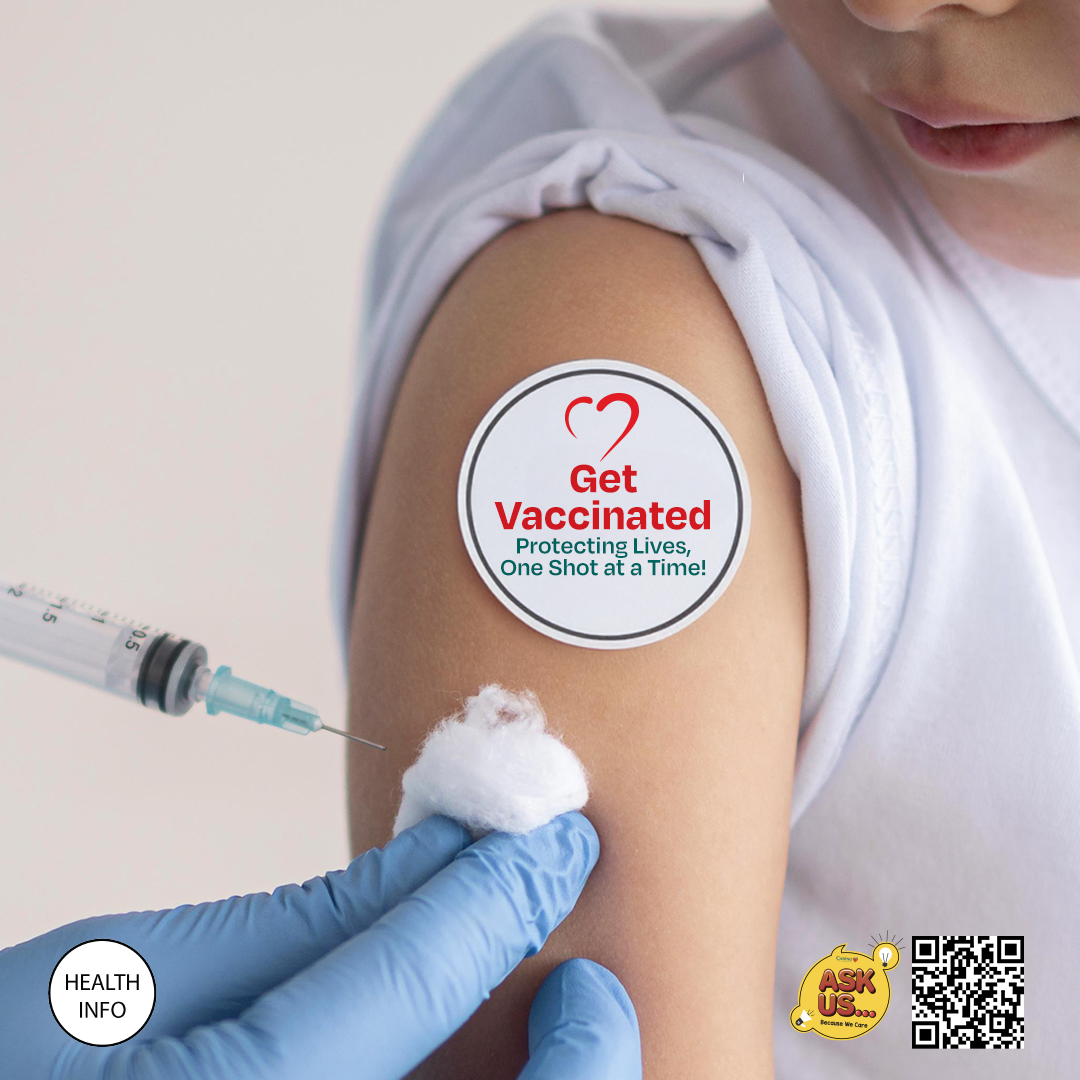- Home
- Health Center
- Health Info
- Fatty Liver to a Healthy Liver
Cholesterol
Fatty Liver to a Healthy Liver
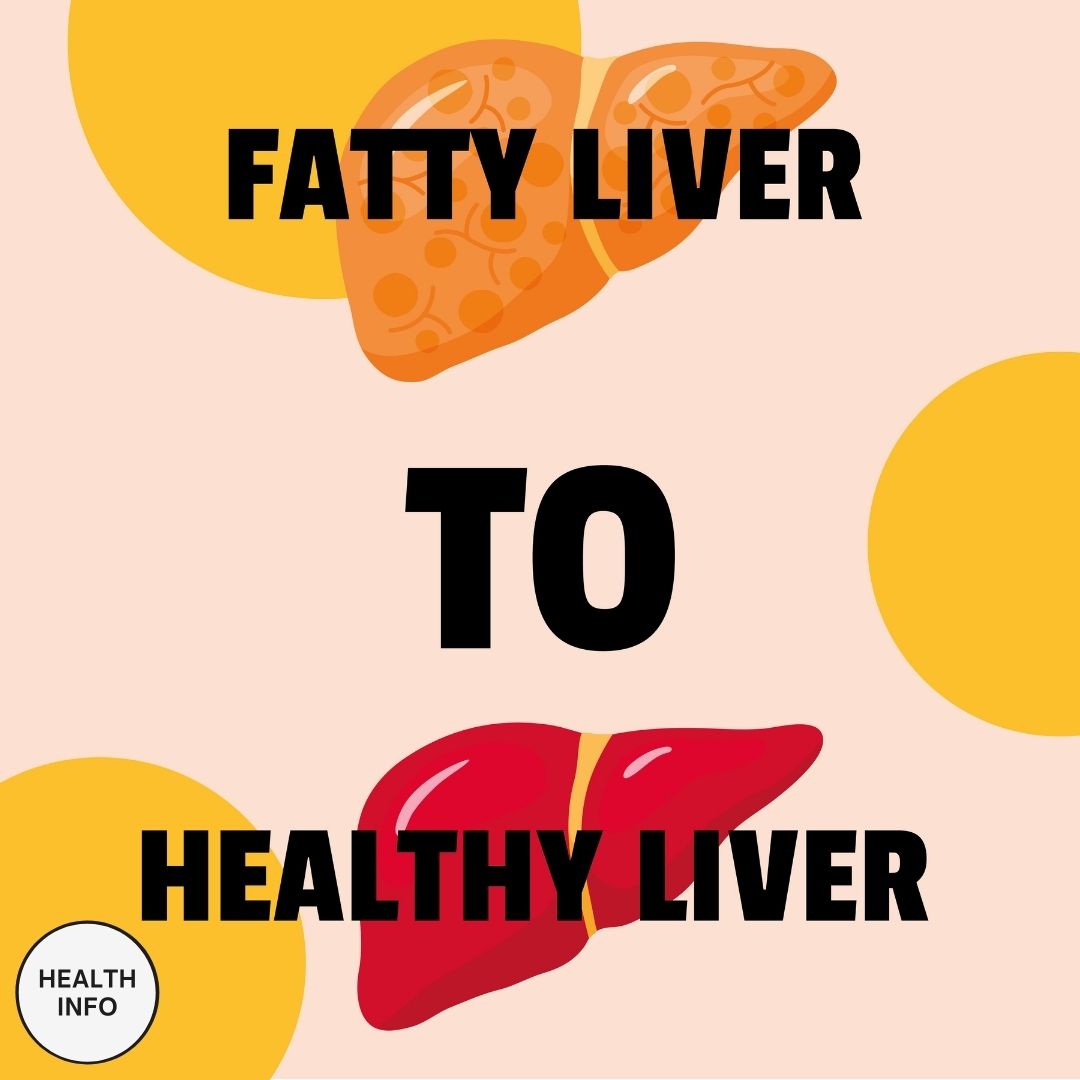
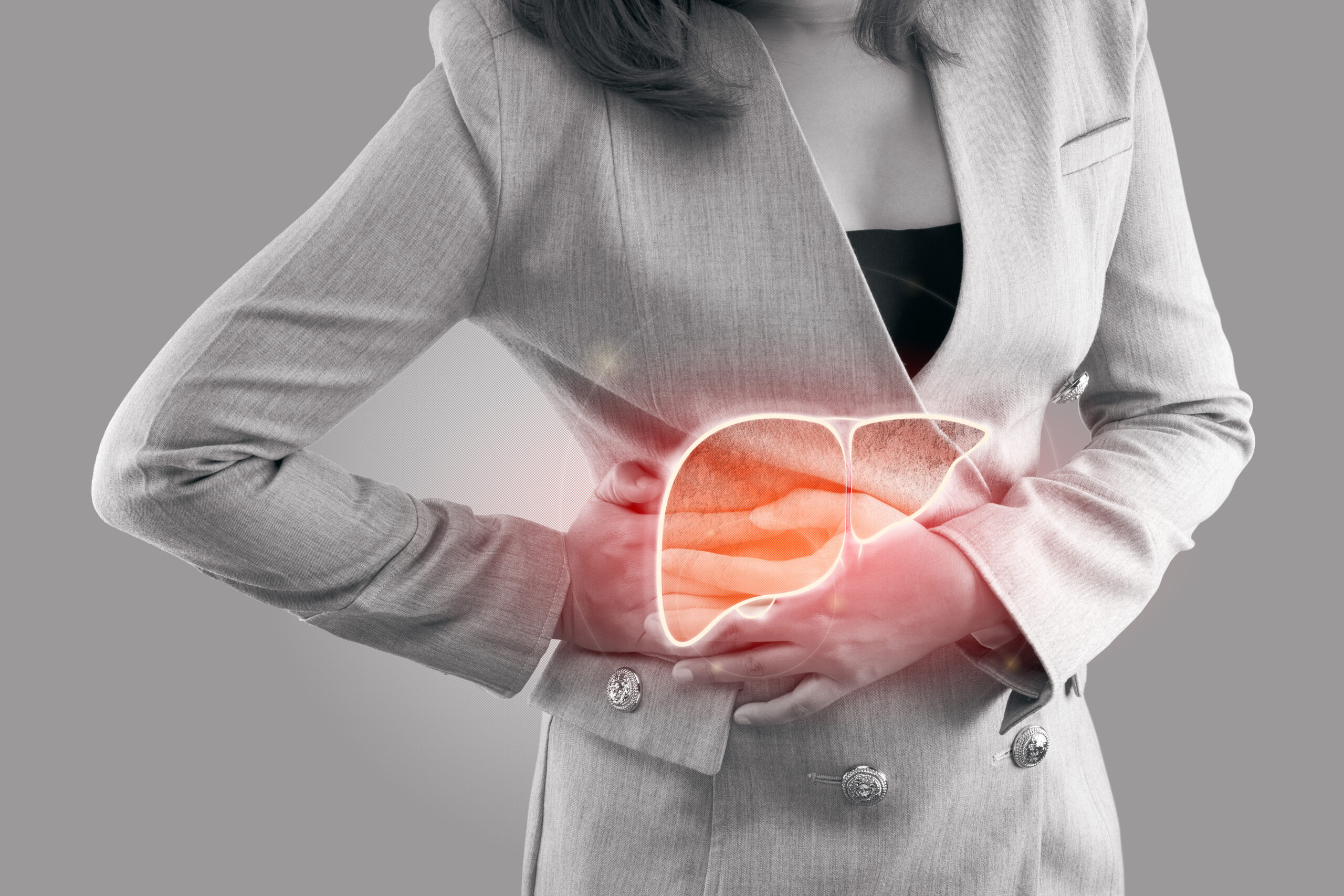
What Is Fatty Liver?
The liver, being the second largest organ in the body, works to detoxify the blood, balance glucose and energy metabolism, produces bile to break down fat from food, stores fat-soluble vitamins and breaks down substances.
If it’s so capable of all these complex functions, what could cause it to go haywire? Fatty Liver can! Fatty liver is the accumulation excessive of triglycerides and other fats in the liver cells, which is more than 5-10% of the liver’s weight.1,2
Types of Liver Disease & its Complications
The two types of fatty liver are Non-alcoholic Fatty Liver Disease (NAFLD) and Alcoholic Liver Disease.
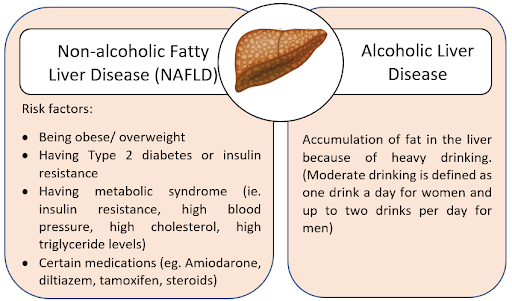
NAFLD develops in 4 main stages3 :
Stage 1: Simple fatty liver (steatosis) – harmless accumulation of fat in liver cells
Stage 2: Non-alcoholic steatohepatitis (NASH) – a more serious form of NAFLD that involves inflammation of the liver
Stage 3: Fibrosis – scar tissue begins to develop around the liver and nearby blood vessels from persistent inflammation; liver function largely unaffected
Stage 4: Cirrhosis – the liver shrinks and is permanently damaged from scarring where it may be followed by liver failure and liver cancer
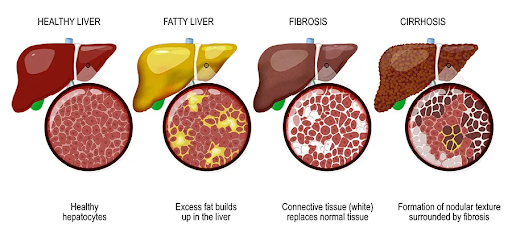
Image from researchfeatures.com
Other NAFLD Complications
Other complications include bleeding in the gastrointestinal tract, ascites (fluid buildup in the abdomen), and brain diseases. Further uncontrolled diabetes and high cholesterol may worsen liver fibrosis and lead to liver cancer.
Alcoholic Liver Disease
As its name suggests, upon continuous stress to an already overworked liver in alcoholic fatty liver disease, one may develop alcoholic hepatitis or cirrhosis. This increases the risk of death and is linked to a higher risk of cancer, particularly liver cancer. 2
How Is Fatty Liver Disease Diagnosed?
Since fatty liver can be asymptomatic, one should conduct annual health checks to detect it. A blood test may present elevated liver enzymes indicating liver injury.1
- Ultrasound or a CT scan can detect liver imaging
- Liver biopsy can determine liver disease progression’
Love Your Liver
Taking care is all about a healthy lifestyle. Here’s how:
- Limit alcohol consumption. It can damage and scar liver cells. Just four ounces (120mL) a day of hard liquor for men (two for women) can begin to scar your liver.4
- Maintain a healthy weight (BMI). Derailing from this can cause a build-up of fatty deposits in the liver which leads to NAFLD. Regular exercising burns triglycerides for fuel and can also reduce liver fat.4
- Eat a balanced diet. Limit refined carbohydrates, saturated fats and high-calorie foods. Consume fibers from fruits, vegetables, whole grain breads, rice and cereals! Add lean meat and healthy fats from vegetable oils, nuts, seeds, and fish. Hydration is also essential for optimal liver function.4
- Manage your diabetes. Insulin resistance from poor blood glucose control is linked to accumulation of excess liver fat and obesity.5
- Manage your cholesterol levels. Triglyceride accumulation and hypercholesterolemia are major contributors to NAFLD. 6
- Stop smoking. Smoking cessation can reduce the risk of a cardiovascular event such as a heart attack or stroke.4
Supplements To Tone Up Your Liver!
There are many supplements in pharmacies. These supplements can protect your liver. We will focus on Milk Thistle and Essential Phospholipids in this write-up. However, if you wish to discover more liver supplements, you can click here to learn more.

Milk Thistle
Also known as silymarin, milk thistle is a popular liver tonic that may help ease inflammation and promote liver cell repair. Its antioxidant properties protect the cell membrane from free radical damage caused by fatty liver and further protects the liver from toxins. Studies on patients with liver disease show that milk thistle reduces liver enzymes and increases serum levels of glutathione, another strong antioxidant that protects liver cells.7
Essential Phospholipids
Phospholipids commonly found in eggs, soybeans, and fatty fish help maintain the dynamic fluidity of cell membranes and support cell function. In fatty liver, phospholipids are incorporated into damaged sections of the liver cell membranes and promote liver cell repair.8,9
Conclusion
Fatty liver may progress if left unchecked but the road to recovery begins by making healthier choices. Protect your liver by simply adopting the healthy lifestyle practices stated above. For further advice on liver supplements and fatty liver management, do visit any Caring Pharmacy near you.
References
- Fatty Liver Disease. Cleveland Clinic. (Web accessed January 2022). Web link: https://my.clevelandclinic.org/health/diseases/15831-fatty-liver-disease#:~:text=Fatty%20liver%20disease%20(steatosis)%20is,10%25%20of%20your%20liver%27s%20weight
- Fatty Liver. E Tommolino, Medscape. (Web accessed January 2022). Web link: https://emedicine.medscape.com/article/175472-overview#a1
- Non-alcoholic fatty liver disease (NAFLD). NHS UK. (Web accessed January 2022). Web link: https://www.nhs.uk/conditions/non-alcoholic-fatty-liver-disease/
- 13 Ways to a Healthy Liver. American Liver Foundation. (Web accessed January 2022). Web link: https://liverfoundation.org/13-ways-to-a-healthy-liver/
- Fatty liver disease in diabetes mellitus. HB Bhatt and RJ Smith (2015). Hepatobiliary Surgery and Nutrition.
- Cholesterol-Induced Non-Alcoholic Fatty Liver Disease and Atherosclerosis Aggravated by Systemic Inflammation. EJ Kim et al. (2014). PLoS One.
- Silymarin in non alcoholic fatty liver disease. F Cacciapuoti et al. (2013). World Journal of Hepatology.
- Dietary phospholipids, hepatic lipid metabolism and cardiovascular disease. JS Cohn et al. (2008). Current Opinion in Lipidology:
- Essential phospholipids in fatty liver: a scientific update. K Gundermann et al. (2016). Clinical and Experimental Gastroenterology.
Tags
Latest Health Info
Get Vaccinated: Protecting Lives, One Shot at a Time
Vaccines are among the most powerful tools in medicine, saving millions of lives by preventing serious diseases. From children to ...
Hair Goals: The Vitamins Your Locks Are Craving
Hair thinning is a natural part of aging—along with greying, hair growth also slows down over time. However, some people ...
HPV and You: Why Prevention Matters
What is HPV?Human papillomavirus (HPV) is one of the most common viral infections affecting both men and women. It spreads ...

